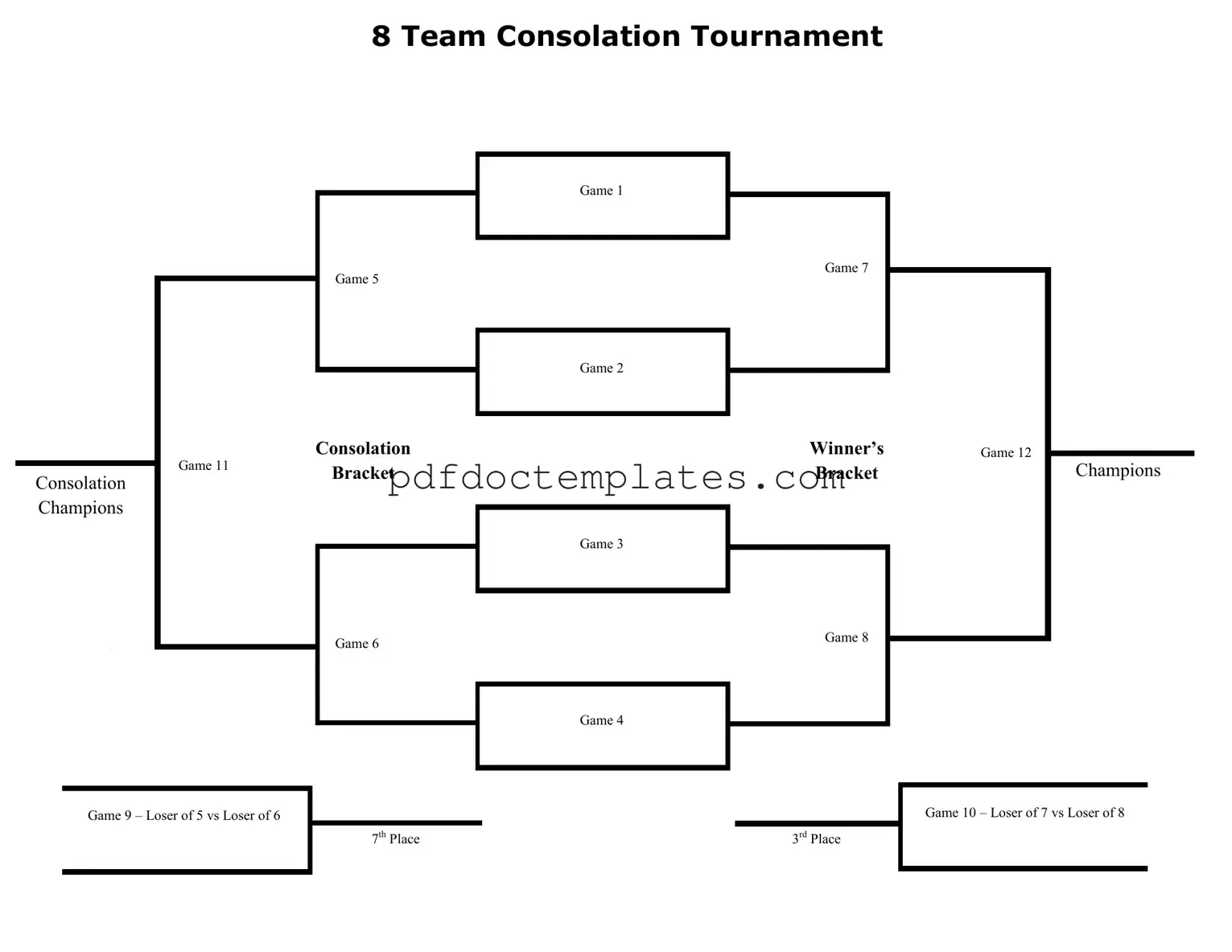Download Tournament Consolation Bracket Template
The Tournament Consolation Bracket form is designed to organize and track the progress of teams that do not advance in a tournament. It provides a structured way to determine placement for teams, ensuring that every participant has the opportunity to compete for a final ranking. To get started, fill out the form by clicking the button below.
Access Your Document

